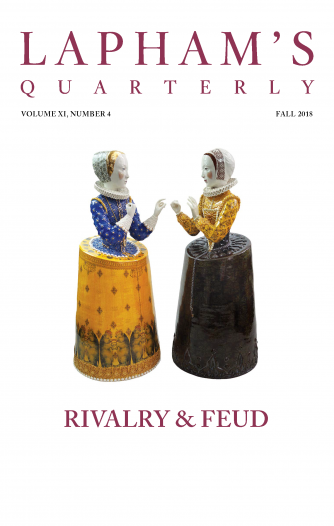When a man is young he has such an overabundance of energy that his senses are quickly stirred and he has many desires.
It is as easy for him to put himself in danger and court destruction as to roll a ball. He likes beautiful clothes and possessions and spends his fortune on them, only to abandon everything for the shabby black robes of a priest. Or, his abundance of high spirits may lead him to quarrel, only to feel ashamed in his heart and envious of his antagonist; his uncertain whims shift from day to day. Now giving himself to his lusts, now moved by others’ kindness, now performing some generous action, he yearns, when he hears stories of men who ruined or even destroyed lives that might have lasted a hundred years, to do the same, and never gives a thought to leading a safe and long life. He is drawn wherever his fancies lead him, and becomes the subject of gossip that lasts even after his death. Youth is the time when a man ruins himself.
An old man’s spirit grows feeble; he is indifferent and slow to respond, unmoved by everything. His mind being naturally placid, he engages in no useless activities. He takes good care of himself, is untroubled by worries, and is careful not to be a nuisance to others. The old are as superior to the young in wisdom as the young are superior to the old in looks.
Translated by Donald Keene. New York: Columbia University Press, 1967. © 1998 by Columbia University Press. Used with permission of the publisher.
From Essays in Idleness. Born into a family of Shinto priests, Yoshida secured a place at court as a poet before taking Buddhist orders in 1324. He once reflected on his writing life, “What a strange, demented feeling it gives me when I realize I have spent whole days before this ink stone, with nothing better to do, jotting down at random whatever nonsensical thoughts have entered my head.” It is believed that the essays did not circulate in his lifetime, but by the seventeenth century they had become popular texts in Japanese education.
Back to Issue

